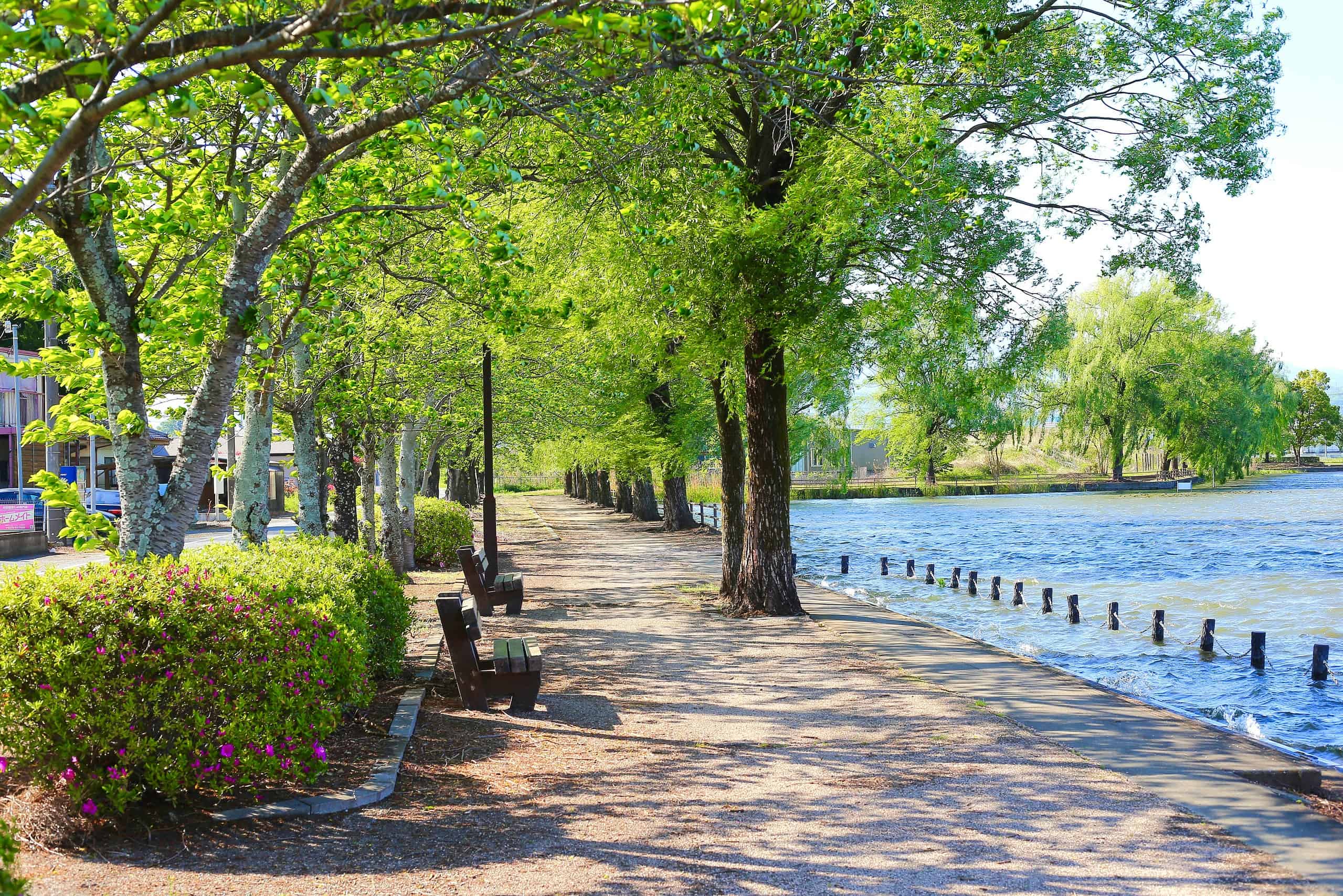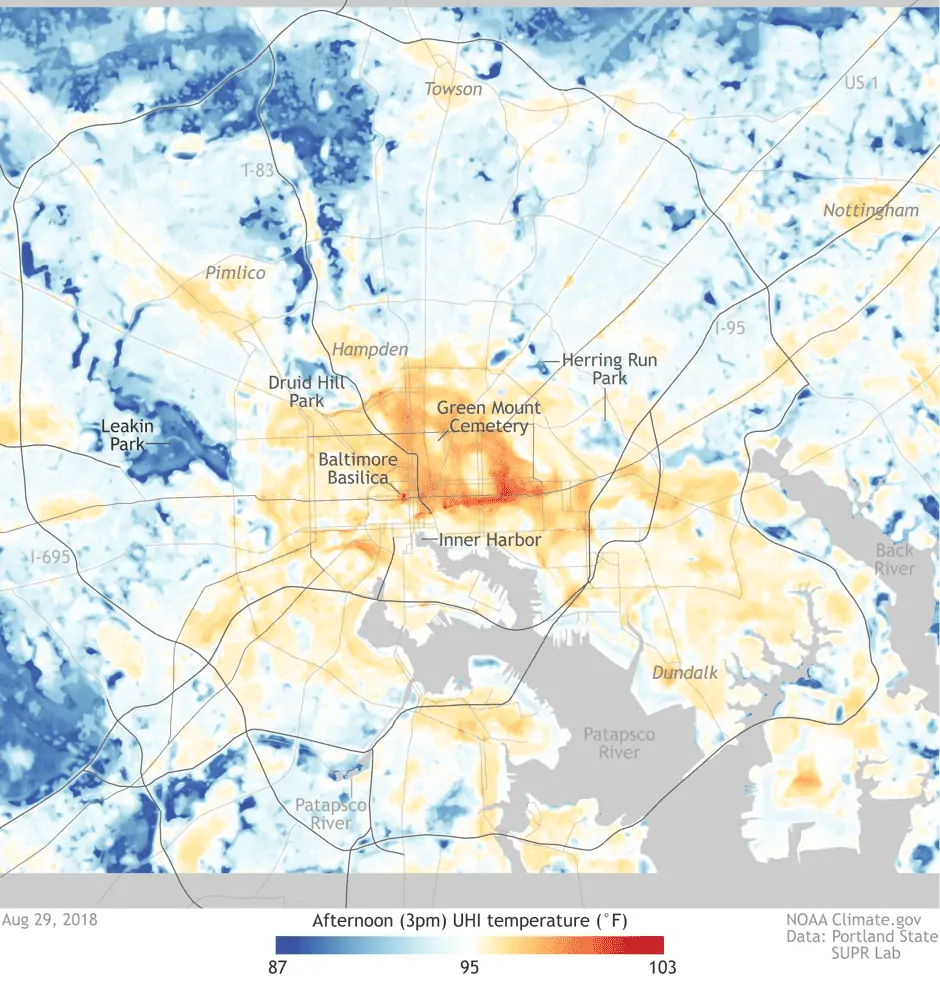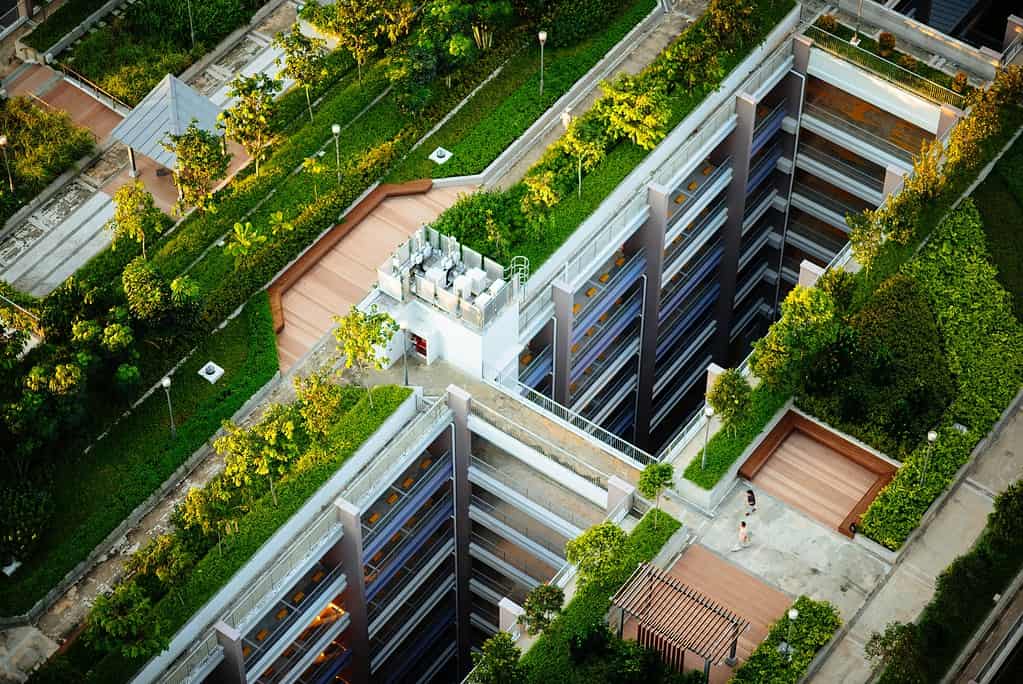
It’s not just that the planet is getting hotter; cities are getting much hotter than their surroundings. In fact, urban heatwaves have become a common occurrence, affecting 1.7 billion people. In Europe alone, the 2023 heatwave killed over 61,000 people. Now, a new study by researchers in the UK shows how much green interventions can help cool down cities.
The world is heating up as a result of our activity — by now, hopefully, we all know that. But fewer people know that cities are heat islands.
The Urban Heat Island
The Urban Heat Island is a phenomenon where urban and suburban areas experience higher temperatures than their rural surroundings. This temperature discrepancy is primarily due to human activities and the physical characteristics of urban environments. Cities, with their dense concentrations of buildings, roads, and other infrastructure, absorb and retain heat more than natural landscapes.
Materials commonly used in urban construction, such as concrete and asphalt, have high thermal mass and low albedo, meaning they absorb a significant amount of solar radiation and release it slowly over time, leading to increased temperatures. Additionally, the limited presence of vegetation in urban areas reduces the natural cooling effect provided by shade and evapotranspiration, exacerbating the warming. As a result, cities tend to be hotter by several degrees than their surroundings.
However, cities aren’t doomed. In particular, the last part (limited presence of vegetation in cities) can be addressed.
Professor Prashant Kumar, director of Surrey’s Global Center for Clean Air Research (GCARE), said, “We have known for some time that green spaces and water can cool cities down. However, this study provides us the most comprehensive picture yet. What’s more — we can explain why. From trees providing shade, to evaporating water cooling the air.”
Professor Kumar said, “This will help town planners around the world confront the challenges of global heating. By implementing just some of the measures we describe, cities can become more resilient, and their citizens can be healthier and happier, too.”
So, researchers screened the existing published papers to quantify the effect of nature-based urban cooling methods. This focused mostly on vegetation (parks, botanical gardens, green walls) but also on wetlands and reservoirs. After screening 27,486 papers, they selected 202 for the review.

How much of a cooling difference vegetation can make
The cooling effect of green infrastructure varies depending on multiple factors (including local climate, the species involved, etc). But the effect is pronounced. Botanical gardens are, on average, a whopping 5 degrees Celsius cooler than their surroundings. Even a street tree cools its immediate surroundings by almost 4 degrees. This is how much different types of green infrastructure can reduce local temperatures:
- Botanical gardens: -5 °C avg (variation: -2.2 to -10 °C)
- Wetlands: -4.7 °C avg (variation: -1.2 to -12 °C)
- Rain garden: -4.5 °C avg (variation: -1.3 to -7 °C)
- Green walls: -4.1 °C avg (variation: -0.1 to -18 °C)
- Street trees: -3.8 °C avg (variation: -0.5 to -12 °C)
- City farm: -3.5 °C avg (variation -3 to -3.9 °C)
- Parks: -3.2 °C avg (variation -0.8 to -10 °C)
- Reservoirs -2.9 °C avg (variation -1.8 to 5 °C)
- Playgrounds: -2.9 °C avg (variation: -2.8 to -3 °C)
In general, the team found that the bigger the park (or any other green infrastructure), the bigger the benefits. Furthermore, if parks are linked together via green corridors, there’s also a compound effect.
However, the team highlights that in some parts of the world — and usually the parts most affected by climate change — there was no research to highlight which solution would work best.
“Our paper confirms just how many ways there are to keep cool. But it also reveals how much work is left to do. Institutions around the world need to invest in the right research — because what’s very clear from our study is that there is no one-size-fits-all solution. It depends on what works for your community,” says Kumar.

Green environmental services
It’s not just reducing temperature; green infrastructure provides a good range of environmental services. It filters the air by absorbing pollutants and particulate matter, intercepts water and reduces erosion and stormwater runoff, and it even saves municipalities money directly on energy cost.
“This cooling is also associated with decreasing energy consumption in buildings through subsidizing heat gain and decreasing the cooling load. Blue infrastructure [water-related elements in urban planning] is reported to act as a heat sink, regulating temperature through evaporation, and absorbing heat thereby contributing to the mitigation of urban heat island effects and the creation of more comfortable urban environments,” the researchers conclude in the study.
Ultimately, when it comes to reducing heatwaves, micro-scale interventions, tailored to the specific environment and local conditions work best. They provide “immediate, cost-effective, and community-centric benefits,” the researchers conclude.
“Nature needs to be brought back into densifying and expanding cities and any opportunity to expand plant cover on the ground, podiums, walls, and roofs must be taken. All urban development must be nature positive to make our cities and their populations resilient against anticipated stresses and shocks from global climate change.”
The study was published in the journal Innovation.



